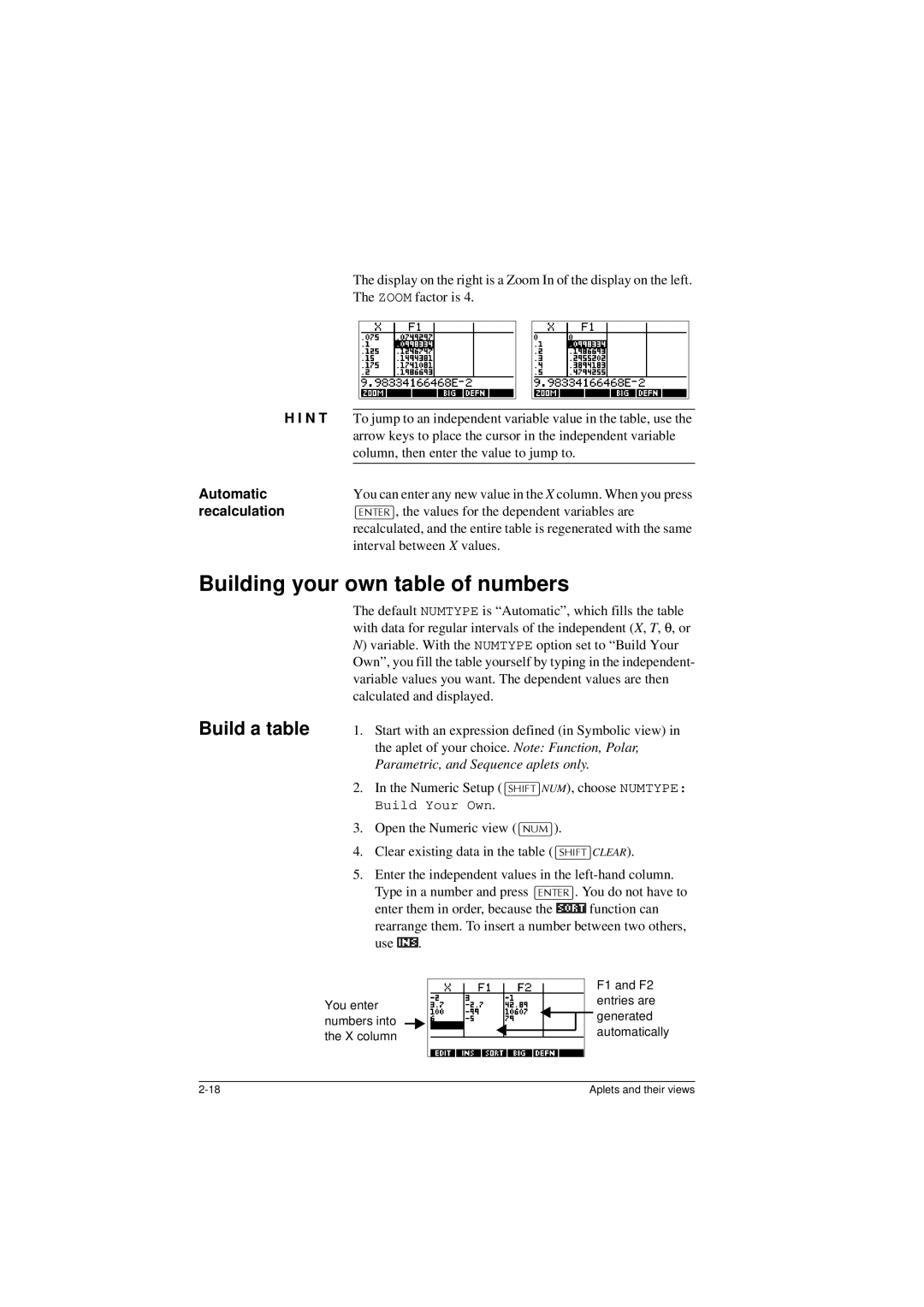
The display on the right is a Zoom In of the display on the left.
The ZOOM factor is 4.
H I N T | To jump to an independent variable value in the table, use the |
| arrow keys to place the cursor in the independent variable |
| column, then enter the value to jump to. |
Automatic |
|
You can enter any new value in the X column. When you press | |
recalculation | >(17(5@, the values for the dependent variables are |
| recalculated, and the entire table is regenerated with the same |
| interval between X values. |
Building your own table of numbers
The default NUMTYPE is “Automatic”, which fills the table with data for regular intervals of the independent (X, T, θ, or N) variable. With the NUMTYPE option set to “Build Your Own”, you fill the table yourself by typing in the independent- variable values you want. The dependent values are then calculated and displayed.
Build a table 1. Start with an expression defined (in Symbolic view) in the aplet of your choice. Note: Function, Polar, Parametric, and Sequence aplets only.
2.In the Numeric Setup (>6+,)7@NUM), choose NUMTYPE: Build Your Own.
3.Open the Numeric view (>180@).
4.Clear existing data in the table (> +,)7@CLEAR).
5.Enter the independent values in the
You enter numbers into the X column
F1 and F2 entries are ![]() generated
generated
automatically
Aplets and their views |
